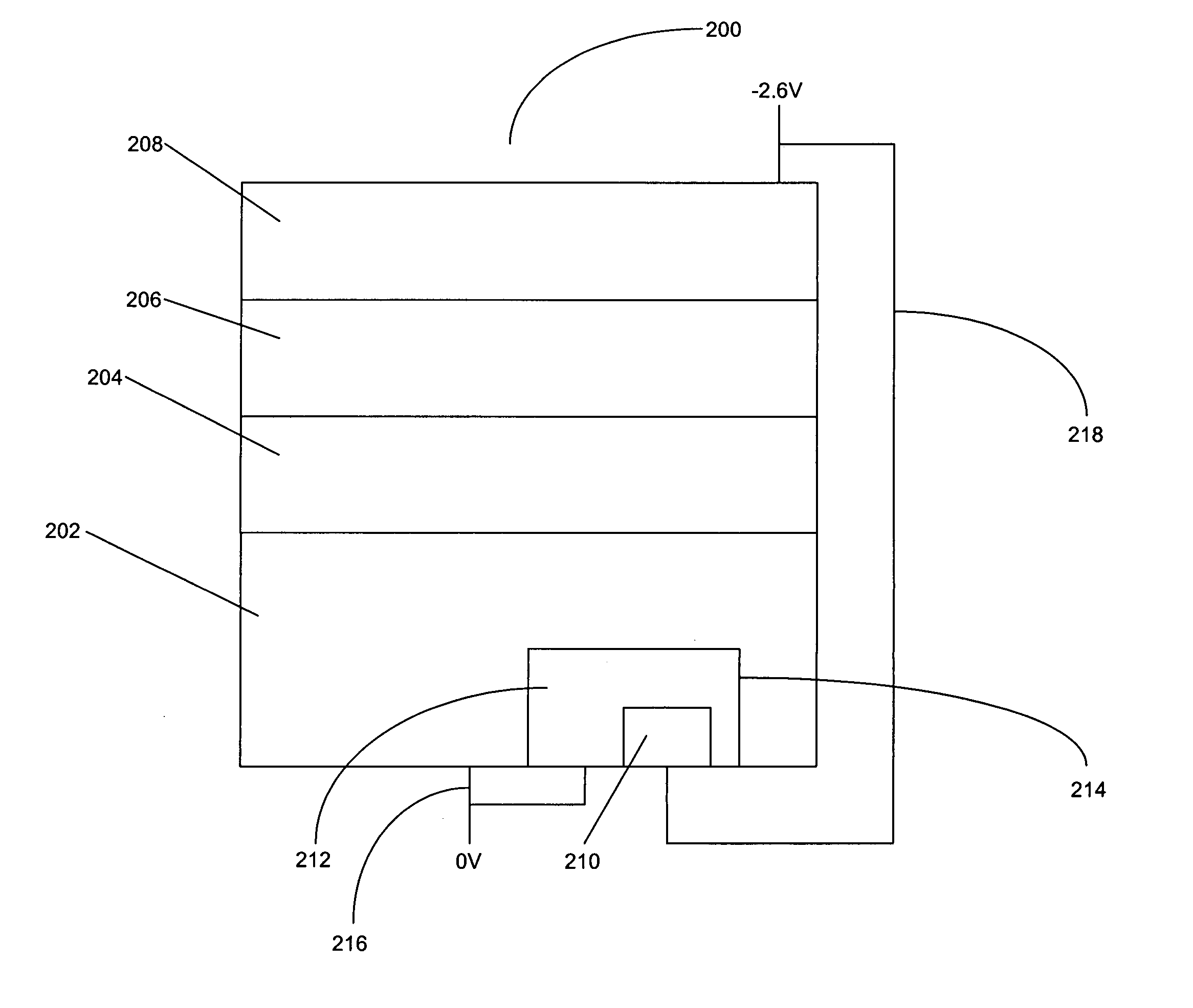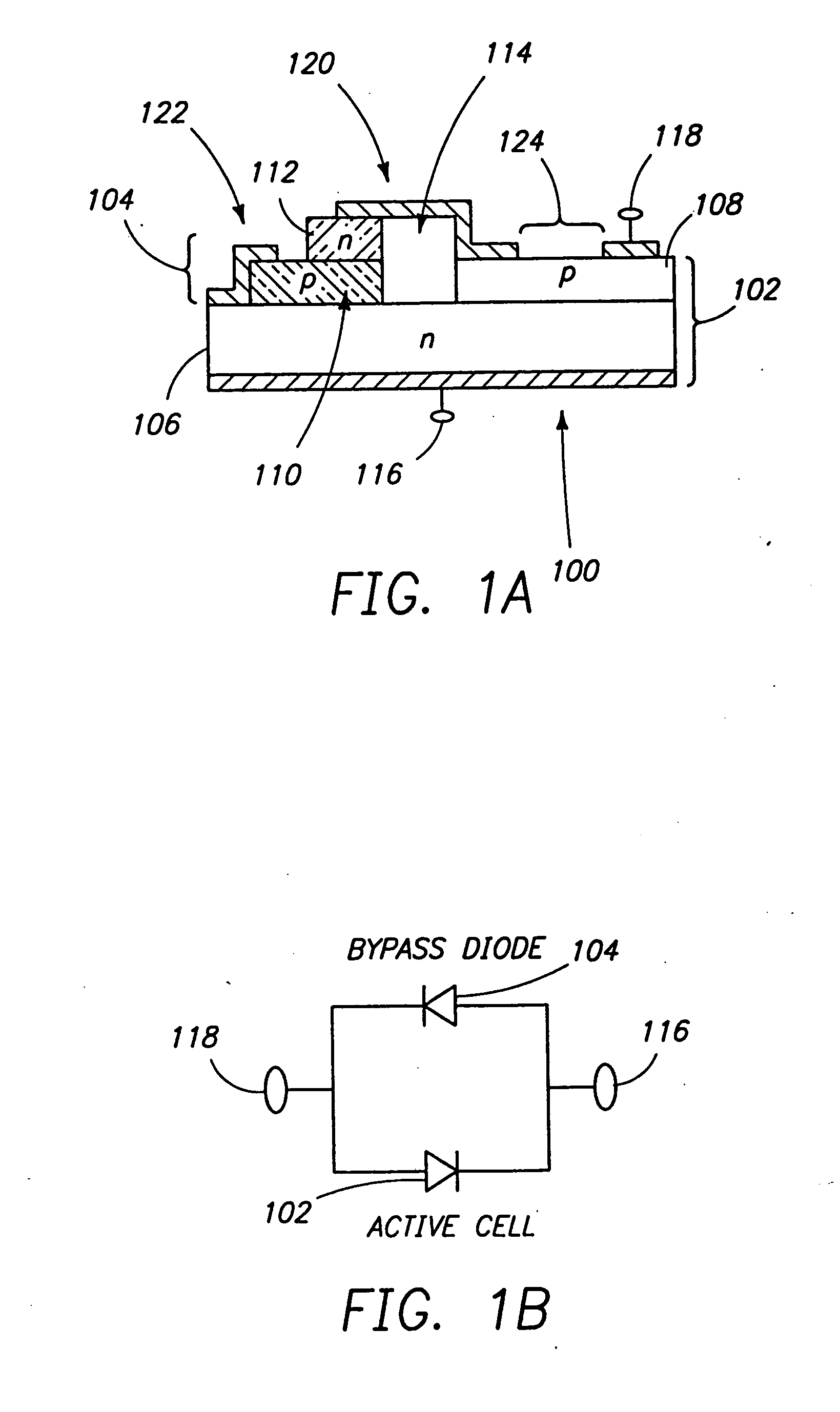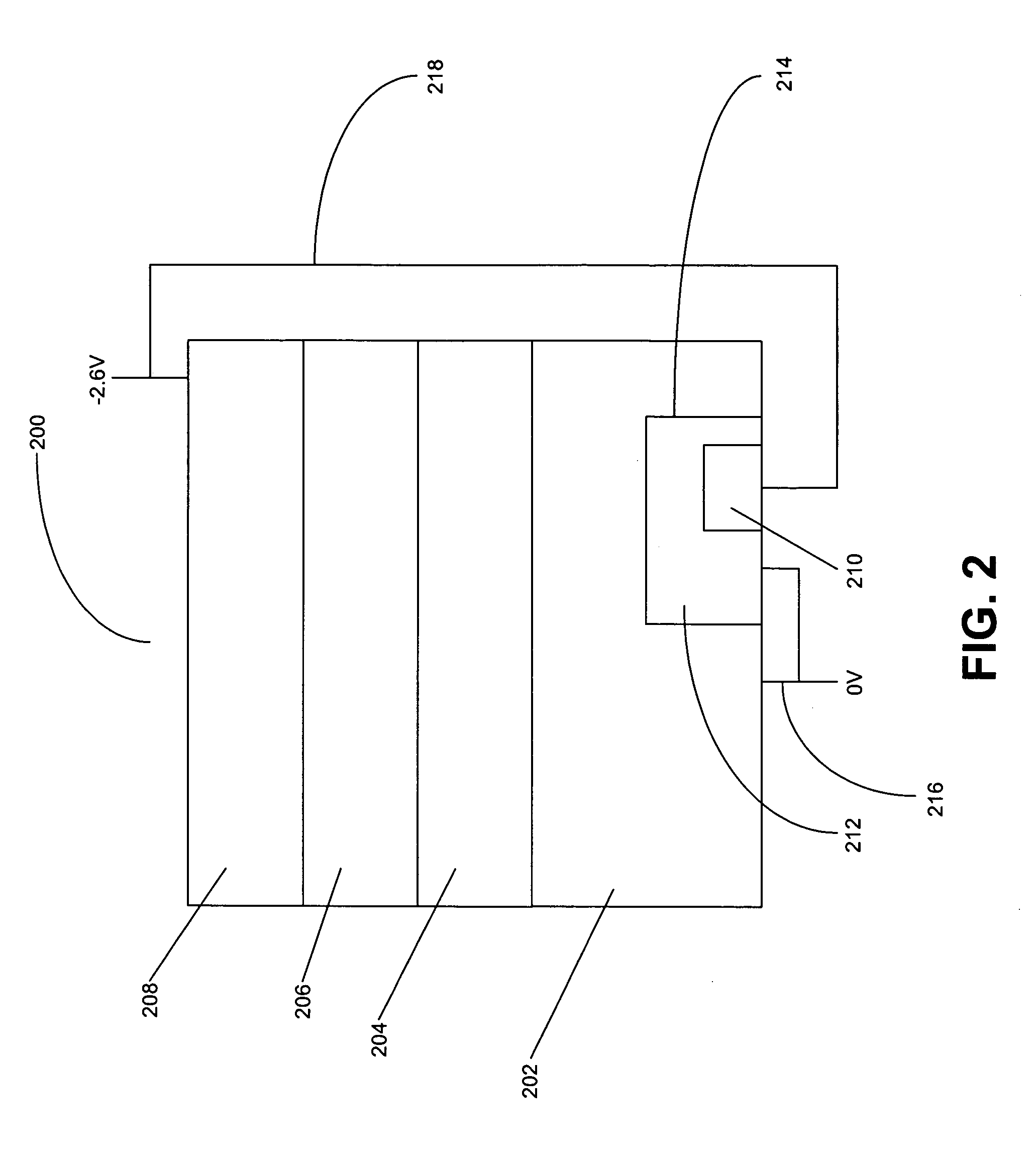Monolithic bypass diode and photovoltaic cell with bypass diode formed in back of substrate
a monolithic bypass diode and photovoltaic cell technology, applied in the direction of diodes, semiconductor devices, electrical devices, etc., can solve the problems of increasing the weight and complexity of the solar cell structure, reducing the efficiency new failure points of the solar cell, so as to minimize the need for additional wiring and/or metallization, the effect of maximizing the solar cell area
- Summary
- Abstract
- Description
- Claims
- Application Information
AI Technical Summary
Benefits of technology
Problems solved by technology
Method used
Image
Examples
Embodiment Construction
[0025] In the following description, reference is made to the accompanying drawings which form a part hereof, and which is shown, by way of illustration, several embodiments of the present invention. It is understood that other embodiments may be utilized and structural changes may be made without departing from the scope of the present invention.
Overview
[0026] The present invention monolithically incorporates a bypass diode into a solar cell assembly. The present invention creates the bypass diode without complex processing steps, which increases the yield for the finished device.
[0027] Prior art processes, such as those described in U.S. Pat. No. 5,616,185, entitled “SOLAR CELL WITH INTEGRATED BYPASS DIODE AND METHOD,” describe using a discrete bypass diode that is integrated with the solar cell as a hybrid assembly. The bypass diode is integrated with the solar cell by forming recesses on the non-illuminated side of the solar cell and placing at least one discrete low-profile...
PUM
 Login to View More
Login to View More Abstract
Description
Claims
Application Information
 Login to View More
Login to View More - R&D
- Intellectual Property
- Life Sciences
- Materials
- Tech Scout
- Unparalleled Data Quality
- Higher Quality Content
- 60% Fewer Hallucinations
Browse by: Latest US Patents, China's latest patents, Technical Efficacy Thesaurus, Application Domain, Technology Topic, Popular Technical Reports.
© 2025 PatSnap. All rights reserved.Legal|Privacy policy|Modern Slavery Act Transparency Statement|Sitemap|About US| Contact US: help@patsnap.com



